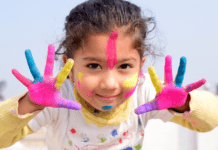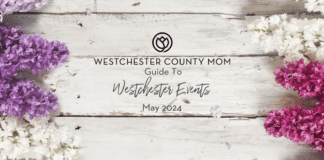“Injustice anywhere is a threat to justice everywhere. We are caught in an inescapable network of mutuality, tied in a single garment of destiny. Whatever affects one directly, affects all indirectly. Never again can we afford to live with the narrow, provincial “outside agitator” idea. Anyone who lives inside the United States can never be considered an outsider anywhere within its bounds.” – Martin Luther King, Jr., Letter from Birmingham Jail
Whenever I read or listen to the words of great Civil Rights leaders like Martin Luther King, Malcolm X, and Angela Davis, I’m awe-struck primarily by two things. One is the bravery in speaking truth to power and the unwillingness to waver in searching for justice and equality. The second is how salient their words remain today, over fifty years later. Despite the progress we espouse, we’re still profoundly entangled and entrenched in a system that privileges whiteness and condemns blackness. You’ll hear some white people declare, “but the President is black,” as though that means we’re done with racial injustice. Martin Luther King, Jr. would have known better, and we should, too. Let’s harness his legacy with kids of all ages today to continue along the path he walked and demand more from our country, society, ourselves.
Every year MLK Day sneaks up on me after the craziness of the holidays die down. I managed to remember early enough this year to have some time to look for books I could read with my son about King, civil rights, and black history. After two trips to Barnes and Noble, one to the library, and several Amazon scours, I found a lot of material that varied in quality. I’m highlighting my favorites below with discussion questions you can use with your kids at story time or in the days following your reading.
Babies and Toddlers (ages 0-3)
The Story of Martin Luther King Jr. is a board book that’s short and sweet enough to read with the littles. This is one I’ve purchased because it suits my son’s age well. Many of the texts I found for much older children were more oversimplified than this little book. It does a great job narrowing in and leaves room for great discussion.
- Can you imagine if some of your friends couldn’t play on the same playground as you because of their skin? Wouldn’t you miss them? Is that fair?
- It says here that this (the unequal treatment of blacks) made Martin angry. I get angry too when something’s not fair, do you? What do you do to feel better when you’re angry? Let’s see what Martin did.
Preschoolers (ages 4-5)
My First Biography: Martin Luther King, Jr. explains why we celebrate MLK day and why he was such an important historical figure, but in super kid-friendly language.
- How would you feel if you couldn’t eat at that restaurant because of your skin color?
- Why do you think people wanted blacks and whites to be separated? Who do you think made that decision?
- Now we look very positively at Martin Luther King Jr. and his actions. How do you think Martin was looked at back when he was protesting? Why?
Lower Elementary (ages 4-8)
A Sweet Smell of Roses follows two girls who sneak out of their house to march with King. Despite jeering angry onlookers, the sisters feel empowered and hopeful.
- The narrator says that Dr. King speaks of peace. Why do you think he saw so much power in peace?
- What do you think the title means? Why does the narrator keep referring to the sweet smell of roses?
- It must have been exciting to be part of the march as kids. Do you think you could get involved like Minnie and her sister did? What would you like to do?
Upper Elementary (ages 7-10)
Thank You, Dr. Martin Luther King, Jr. appears out of print, but I found it at my library. It’s about a young girl who wants to be in her school history play but is unhappy when selected as the black history skit narrator. The eventual message of black pride and self-love is powerful. Still, this text creates space for conversation with all kids around representation vs. tokenization, white privilege, and the construct of race in general.
- Why doesn’t Mary want to narrate the black history skit? Why did her teacher assign it to her?
- What would you have done if you were Mary’s teacher? What about if you were her classmate?
- How did Mary’s feelings change after she saw Big Momma? Why do you think Big Momma’s message was so effective?
- What role do privilege and power play in this story?
Middle School (ages 11+)
March. This is a fantastic graphic novel written by Georgia Congressman John Lewis. Unlike the other books in this list, it will take longer than a day to read. The story is rich and robust, following Congressman Lewis’ journey through the civil rights era, including the influence King had on him and still has on his approach to fighting for justice.
- In what ways did Lewis demonstrate resistance? How do you think that resistance compares to the method of resistance espoused by other civil rights leaders? What about agents of social change today?
- How do you think violence against protesters, like the attack Lewis suffered at the lunch counter, was portrayed in the media? Is that the same way we see it portrayed in retrospect?
- What connections do you see between historical moments like the March on Washington and the Selma bus strike and more current civil rights struggles like the Black Lives Matter movement protests?
When kids are in middle school, another good option is to read Martin Luther King’s own words with them. You can do this at any age with the beautifully illustrated I Have a Dream, abbreviated enough that even my antsy toddler happily read it with me. It includes the full text in the back and an audio CD of the actual speech.
Middle schoolers are already familiar with this speech. They can undoubtedly revisit it as you reflect together on King’s legacy, but another great option for older kids is Letter from Birmingham Jail. In this text, King discusses the tenents of nonviolent resistance, the need for urgency, and the politics of power and law and order. Your pre-teen or teenage child may already be reading this in their English or Social Studies class. Read along and chat it up at the dinner table; it’s a piece of American history worth reexamining.
I must share an important caveat to the list above with you. White people write most children’s books about MLK. Ummm, what the heck? If there are any publishers out there reading this, let me give you some advice. Hire a person of color to write about important people of color. It’s not rocket science. Don’t just ask your general biography person or the person who’s written for your series before. Do five more seconds of work to honor the people you’re profiling. Please and thank you. (The books featured here are all written by black authors except for the My First Biography.)




















